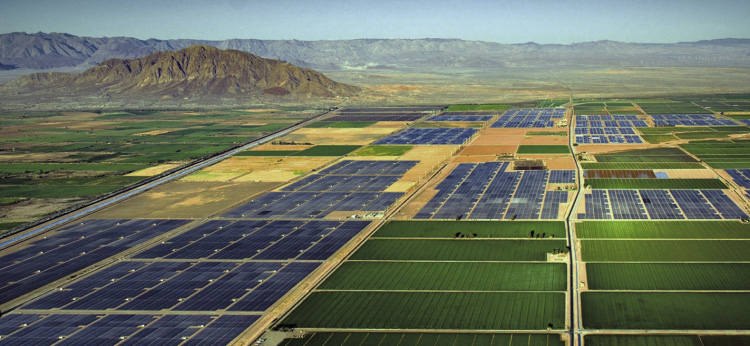From pv magazine USA
Senator Ed Markey (D-MA) introduced a bill, Connecting Hard-to-reach Areas with Renewable Energy (CHARGE), that is set to make critical changes to energy transmission planning and operations in support of a future powered by renewable energy.
As solar PV and wind projects join the nation’s electric grid, often in remote or rural areas, there is a lack of power lines to bring the power from distant generation sites to areas of high energy demand like cities. Across the country, the aging electric infrastructure will need to be rebuilt to serve this new class of electric generation.
Markey’s summary of the bill explained that the processes in place to plan and build transmission are fractured across many jurisdictions and shaped by incumbent utilities that lack a forward-looking, long-term strategy. Due to this, Markey said federal policy will be key to ensure proper planning and investment are in place.
“For the United States to run on green energy, we first need to build green infrastructure,” said Senator Markey. “Right now, the United States relies on two-lane roads for our electricity traffic when we need a renewable energy superhighway.”
The problem is already here
Arduous transmission upgrade problems have already hampered Markey’s home state of Massachusetts in achieving its renewable energy goals. About 679MW of solar projects have been trapped in a group study by utility National Grid to evaluate what transmission upgrades are needed to support the new capacity. Some projects have been stuck for three years and may be subject to as much as five more years of waiting for National Grid to approve interconnection of the project.
What’s more, there is a lack of transparency in how these upgrades are justified, and who bears the cost. In Massachusetts, in many cases, utility-scale solar developers are stuck footing the bill for significant utility transmission upgrades. In an interview with pv magazine, Jessica Robertson, Borrego Solar director of policy and business development, said “If we don’t have a new way of structuring cost allocation, the costs for all these projects will be prohibitive, and they will be cancelled.”
Popular content
A letter to the Massachusetts Department of Public Utilities warned that 6,800 jobs and $300 million in municipal revenues are exposed to damage from the upgrade costs and delays. This problem scaled from one small state to the entire country, plus interstate concerns, are motivating factors behind the CHARGE act.
What’s in the bill?
The CHARGE Act offers wide-ranging federal policy that introduces a series of reforms to the Federal Energy Regulatory Commission (FERC). The bill:
- Formalizes planning processes for long-distance power lines
- Requires transmission plans prioritize low customer prices, decarbonization, resiliency and reliability, and the avoidance of environmentally or culturally sensitive sites
- Ensures utilities reach their publicly stated decarbonization goals
- Bolsters regional transmission to prevent widespread regional blackouts
The Act introduces measures for data transparency, which will tighten up the way utilities report their operations and expenses. The bill:
- Requires utilities to report hourly operational and emissions data in a transparent and timely manner
- Report the operational data in a new Energy Information Administration (EIA) database
- Remove barriers to commercial projects to alleviate congestion on the grid and provide emissions reductions
The Act has provisions for competition, fairness, and equity. The bill:
- Requires open competition for new electric generation projects
- Ensure state subsidies do not interfere with interstate wholesale market participation
- Forms an Office of Transmission within FERC to coordinate transmission activities
- Establishes an advisory committee to improve governance and stakeholder participation of grid operators
“The CHARGE Act lays the groundwork for an energy grid that can support an explosion of electric-powered vehicles and buildings, while also improving energy reliability, lowering costs for consumers, and spurring economic competition. My legislation will supply America with the tools and guidance needed to turn the clean energy revolution up a notch, accelerating our shift to true energy-independence that breaks our nation’s reliance on foreign oil from countries like Russia,” said Senator Markey.
Read the bill in its entirety here.
This content is protected by copyright and may not be reused. If you want to cooperate with us and would like to reuse some of our content, please contact: editors@pv-magazine.com.



4 comments
By submitting this form you agree to pv magazine using your data for the purposes of publishing your comment.
Your personal data will only be disclosed or otherwise transmitted to third parties for the purposes of spam filtering or if this is necessary for technical maintenance of the website. Any other transfer to third parties will not take place unless this is justified on the basis of applicable data protection regulations or if pv magazine is legally obliged to do so.
You may revoke this consent at any time with effect for the future, in which case your personal data will be deleted immediately. Otherwise, your data will be deleted if pv magazine has processed your request or the purpose of data storage is fulfilled.
Further information on data privacy can be found in our Data Protection Policy.